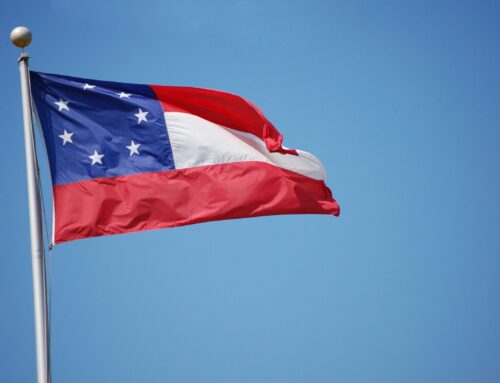How the Syrian Arab Army’s Victory in Aleppo City indirectly turned the Tide of the War against the Islamic State
By Andrew Illingworth.
The battle for the city of Aleppo proved to be the largest and longest battle of the ongoing Syrian War to date. Yet despite the fact that the Islamic State of Iraq and al-Sham (ISIS) never played a direct role in the battle at any point in the four-and-a-half years of its raging, the consequences of its outcome have sealed not just the fate of the non-ISIS Jihadist and Islamist factions who lost the battle, but also the fate of the Islamic State. This indirect victory against ISIS was the solving of the Syrian Arab Army’s (SAA) manpower issue.
The stalemate effect of manpower shortages prior to the Aleppo victory
Prior to the liberation of Aleppo, it had often been the case that the SAA’s battle against Daesh was regulated to a protracted defence across the entire vertical length (from the north to the south) of Syria. Any offensive operation against ISIS by the SAA could be stopped by the terrorist group through their strategy of attacking not only the flanks of a given pro-government advance, but also launching an offensive of its own in an entirely different area of Syria. Such distractive attacks by ISIS always forced the SAA to commit troops and other crucial military resources (namely airpower) away from its original offensive efforts, limiting or outright stopping the success of such operations.
Interestingly enough, the US Department of State (DOS) under the Obama administration always used this aforementioned reality against the Damascus government on the public relations level, falsely claiming it to be proof that President Bashar al-Assad was not really fighting ISIS.
The Russian intervention in October 2015 offered a six-month reprieve for the pro-government forces across all fronts. Russian airpower in particular wreaked havoc on overextended ISIS communication lines and allowed the SAA to conduct an offensive in Aleppo province which led to the lifting of the siege of the Kuwaires military airport and the liberation of much of the countryside surrounding it from Daesh. However, much of Russian air contingent’s firepower had to also be committed to fighting Western-vetted Islamist groups and al-Qaeda forces operating through Syria and thus the reality stood that the Russian Aerospace Forces alone were not going to turn the tide of the war.
Only when the pro-government forces cooperated with their de facto Iraqi allies could a reasonably successful offensive against the Islamic State presence in Syria be accomplished. For example, the success of the Palmyra operation in March 2016 by the SAA and its allies was made possible due to a coordinated offensive near Mosul by the Iraqi Security Forces (ISF) which discouraged the Islamic State from sending reinforcements to Homs province in Syria.
Key offensive units of the SAA such as the Desert Hawks Brigade participated in the liberation of Palmyra, however they were withdrawn to other fronts from May onwards. For the next six months a general stalemate assumed between the pro-government forces and ISIS across Syria. For example, an SAA offensive on Raqqah in June 2016 via the Ithriya axis initially resulted in a twenty kilometre advance but was fully reversed by ISIS once reserves were moved into area and used to launch a series of devastating counterattacks into the flank of the government advance. The offensive had not been coordinated with any other Syrian or Iraqi-based allied or semi-allied forces and at the same time pro-government forces were fighting off a concerted offensive by Jaysh al-Fateh (Army of Conquest) in southern Aleppo.
By late-November 2016, the SAA had virtually all of its elite formations (armoured units, the Tiger Forces, the Republic Guard and the Desert Hawks Brigade) focused on Aleppo whilst, at the same time, ISIS was eroding the mountainous buffer zone north of Palmyra. Thus it should have come as no surprise that ISIS was able to retake Palmyra in December 2016 after a relocation of strategic reserves (comprising thousands of fighters) from Iraq’s province of Anbar to eastern Homs in Syria.
The point here is that the SAA could only maintain an overwhelming offensive posture on one front at the endangerment of other fronts. Reserves were simply not available.
In any case, the trading of Palmyra for Aleppo still represented a lopsided outcome in favour of the pro-government alliance.
The exponential effect of having a manpower surplus since the Aleppo victory
Victory in the Battle of Aleppo for the SAA released twenty thousand (20,000) government soldiers and their respective fire support assets – hundreds of tanks, armoured fighting vehicles and artillery pieces – for service on other fronts in Syria. Virtually of these aforementioned Syrian troops belong to elite formations whose primary role is to carry out offensive operations throughout the country.
Moreover, the heavy defeat of the Jaysh al-Fateh and Fatah Halab (Conquest Aleppo) operations rooms in the battle for Aleppo also fundamentally undermined the military capabilities of the so-called “opposition” forces and demoralised their leadership. This has once again forced them to agree to a nationwide ceasefire against pro-government forces (as in February of 2016) which mostly holds despite upsets in the Wadi Barada valley region (recently liberated by pro-government forces in its entirety) and in northern Hama province.
As of January 2017, most of the hardline Salafist and Islamist militant groups in Idlib, western Aleppo, and northern Hama provinces have been more interested in fighting each other than uniting against pro-government forces.
Since January 2017, the SAA and its paramilitary allies (such as Hezbollah) have committed to two large-scale offensive operations against ISIS in both the countryside of eastern Aleppo province and in eastern parts of Homs province. The offensives are targeting the strategic crossroad town of al-Bab and the ancient city of Palmyra respectively. Both operations are ongoing and are relatively successful so far, particularly in the case of the al-Bab offensive were over thirty villages have been liberated and some 650 ISIS terrorists killed over the course of one month.
As these pro-government operations have been unfolding, ISIS has desperately launched its own offensives on other fronts – Deir Ezzor and east Qalamoun provinces – with the hope of distracting the SAA and its allies at the strategic level. The aim was to bring the pro-government offensives on al-Bab and Palmyra to an end. Unfortunately for Daesh, the strategy has not worked this time around.
For example, the attack in east Qalamoun province against the al-Sin airbase by ISIS was initially threatening, with the terror group making some worthwhile operational gains north of the military airport (namely, a number of checkpoints and some abandoned army bases). However, within days the SAA sent elite reinforcements from Damascus. These SAA units restored most of the earlier losses over the course of one week and, most importantly, brought the offensive by ISIS to an end.
Here it is interesting to note that the arrival of these reinforcements came at no expense to either the al-Bab or Palmyra fronts where the SAA maintained an offensive posture. In the case of the Palmyra front, a large detachment from the Desert Hawks Brigade arrived to reinforce it despite the threat posed to the al-Sin airbase much further south. Thus, not only were the pro-government forces able to maintain both of their offensives, they were able to reinforce one of them despite being attacking in a third location (and arguably fourth location if one includes the latest ISIS offensive against Deir Ezzor). The capability of the SAA to do this is unprecedented in the Syrian War and it is the victory at Aleppo which has made it possible.
At Deir Ezzor, ISIS managed to split the pro-government bastion into two parts – the Deir Ezzor military airport and the government-held parts of the city proper. However, since this initial success, the pro-government troops holding the bastion have been reinforced with seasoned Republican Guard units and have managed to almost reconnect the pocket through a series of local counterattacks. Due to round-the-clock airpower provided by the Russian Aerospace Forces, including the use of strategic bombers in six separate raids, Daesh has suffered tremendous causalities and many of their forward command centres, ammunition storage depots and artillery positions in and near the city have been destroyed, severely undermining their ability to maintain an offensive posture.
Again, it must be emphasised that the SAA managed to stabilise the situation in east Qalamoun and Deir Ezzor whilst maintaining their own offensives on al-Bab and Palmyra. What is also worth noting is that the SAA also waged a successful offensive against the Jihadist-Islamist rebel bastion in Wadi Barada during this time, liberating the entire area and releasing another 5,000 government troops for service elsewhere (although many of these troops will be used to clear other pockets around Damascus and the Golan Heights).
Although the situation for ISIS in Syria is already terminal at this point, it will only continue to deteriorate at an exponential rate. For each rebel-held pocket that is inevitably cleared around Damascus by pro-government forces, thousands more SAA soldiers will be available to fight against ISIS. Some military sources in Syria speculate that the liquidation of the East Ghouta pocket will free-up some twenty thousand more pro-government troops for operations elsewhere. To this end one needs to consider that if the release of 20,000 from the Aleppo operation decisively turned the tide of the war against ISIS in Syria, then to what effect will another twenty thousand have on speeding up the conclusion of the Syrian conflict in its entirety.






Leave A Comment
You must be logged in to post a comment.